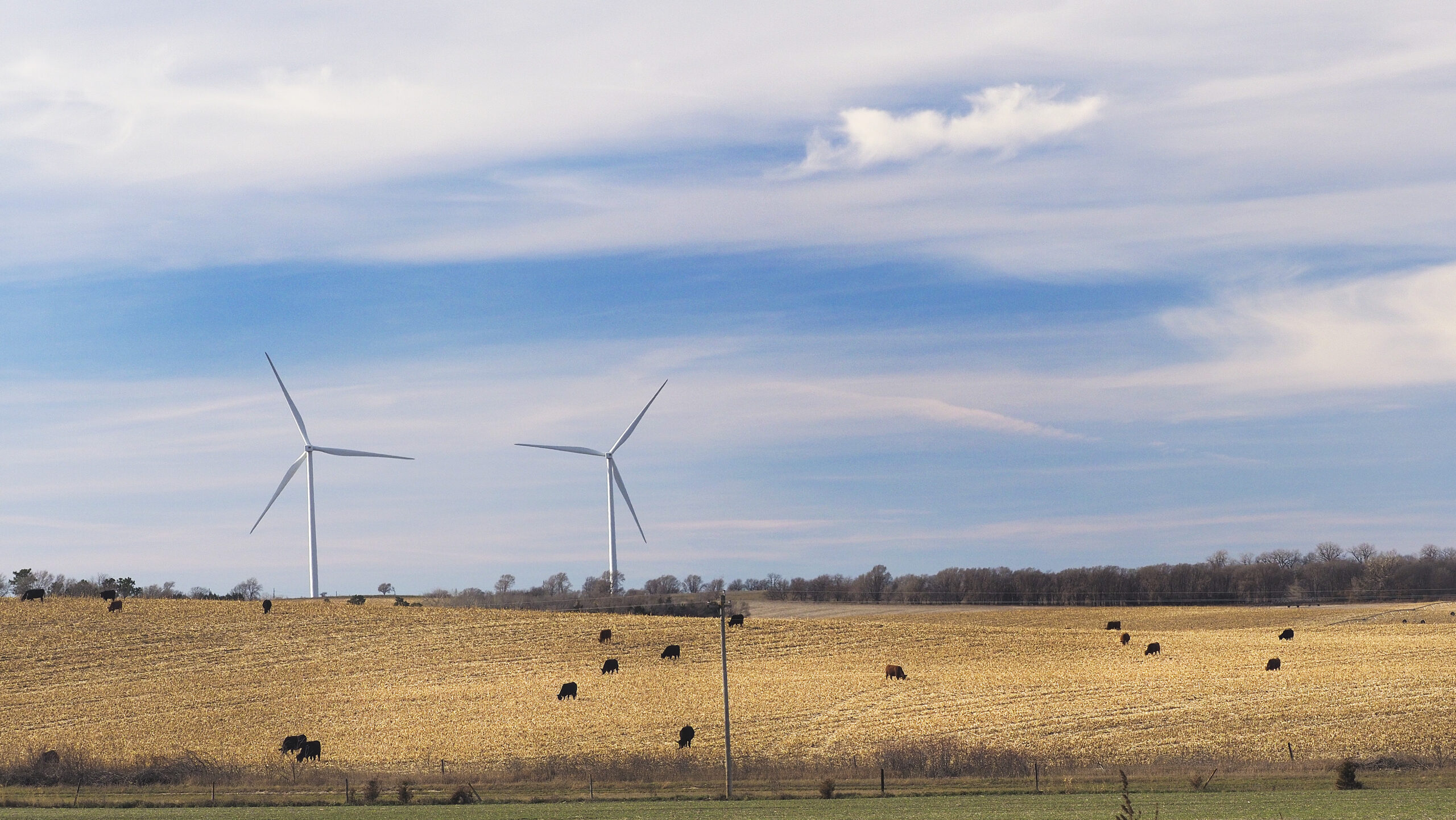
On January 9-12 almost 200,000 attendees descended upon the Las Vegas strip for four days of all things consumer technology at the annual Consumer Electronics Show (CES) orchestrated by the Consumer Technology Association (CTA).
Over 37,000 buying organizations were represented with an attendee mix of everyone from technology enthusiasts to media to industry analysts and technology professionals.
Basically, if you’re in the consumer technology space you have to be at CES. Just like if you’re in the startup space in the Midwest you have to go to Big Omaha *cough* shameless plug *cough*.
Here’s my list of the top trends to watch from CES:
1. Fragmentation
CES is a far cry from its early days when break out products like the Apple I, VHS, DVD, and even X-Box were unveiled to the public at the show and would become mainstream hits.
The consumer technology landscape has shifted so that not one single product has to be a blockbuster to be successful.
Think about this: 95% of households own a TV, 85% have PCs or tablets, 75% own smartphones, but with a much more fragmented environment the next big consumer technology may very well end up having a 30-40% adoption rate. And that will still be a billion dollar opportunity for the lucky startups and big boys who break through.
Imagine your kids are watching their favorite TV show. In the future chances are you probably won’t know if they’re watching it on an Apple TV, Amazon Fire, Playstation, or Roku.
2. Artificial Intelligence
This is exciting. Someday soon we will all have our own Jarvis just like fictitious billionaire Stark’s virtual AI assistant in Marvel’s Iron Man movies.
Not one to buck the trend, Mark Zuckerberg already built himself his own Jarvis using open source protocols and APIs, and it even has Morgan Freeman’s voice. We saw AI baked into lots of different tech and will be interesting to see where this goes.
3. Connections and computations
All those fancy new tech gadgets require connectivity. With the roll out of 5G, the focus is on speed, capacity and latency for connectivity that brings together all mobile devices.

4. Intelligent systems connecting diverse objects
Software is eating hardware.
And hardware eating software.
Basically this means, all our devices are getting smarter—from fridges to door locks—and are powered by apps on our smartphones.
An example would be the difference between Amazon Echo and Google Home. Echo is good at commands such as “play music” while Google excels in queries such as “What is the capital of Nebraska?”
It soon won’t matter because these systems will become exponentially more intelligent as we engineer them to be smarter through every interaction. So there’s hope that maybe someday Siri won’t always say “I don’t understand the question”…
5. Smart home
In 1893, Josephine Cochran introduced the dishwasher at the Chicago World’s Fair, but it wasn’t until post WWII—almost 50 years later—that adoption took off.
What happened?
The electrification of homes and wide standard deployment of plumbing had to occur before dishwashers could reach the masses.
Today 85% of households now own a dishwasher. The Consumer Technology Association estimates that in 2016, there is a $25 billion market in so called home automation robots.
But we have to redefine our definition of “smart home.” As a millennial, I remember being fascinated by the Disney Channel Original Movie “Smart Home”. In actuality, we have redefined what smart home actually means through various decades and aren’t far off from that movie:
- 1960s Jetsons’ “magical automation”
Think pancakes flying out the wall and carpets magically cleaned - 1980 Structured automation
Think wiring homes for things like intercoms and security systems - 2020 Age of adaptive automation
Fragmented little pieces come together in a whole ecosystem—wearables, voice control, appliances, seamless wireless smart home

6. Wearables
UnderArmour continues to impress with their “Connected Fitness” movement after acquiring apps like My Fitness Pal.
More than 200 million people now are part of the UnderArmour army of data.
More wearables that do niche things and solve big problems will continue to flow down the pipeline. There was even one device that can detect whether you have Malaria!
7. Self driving cars
I got to test drive Valero’s and BMW’s concepts. Cool cars. Personally, if traditional auto makers get in on the electric game their extensive network of dealers and distribution points could give Tesla a run for their money. The key is that battery technology must continue to catch up.
8. Drones
Drones are being utilized in a wide variety of applications—shipping, security monitoring, and whatever entrepreneurs can dream up. We saw selfie drones, giant drones, tactical drones and more.
9. VR
The adoption of VR is still in its infancy. Case and point: Take out your VR goggles right now so we can do a demo… oh wait, you don’t have a pair? What, are you living in 2016? Just like it took the proliferation of the smartphone to make apps a thing, VR hardware needs distribution before it will become mainstream.
There is hope that Oculus, Google, Sony and others will deliver.
We rode a VR roller coaster that was quite convincing and even gave me post roller coaster motion sickness. But don’t expect us to all have VR goggles by the end of the year.
10. Democratization of innovation
This is my favorite take away from the whole week. As Kate Drane, Director of Development for Indiegogo in Chicago best put it:
“It’s amazing that movements like crowdfunding are democratizing access to capital and resources. If you live outside a hub like Silicon Valley it used to be difficult to get access, but with platforms like Indiegogo you get national and international exposure you wouldn’t before. We bring ecosystem to areas that might not have it.”
Super exciting news and something we need to be cognizant of and participating in as the Silicon Prairie.
Indiegogo even went as far as bringing reps to CES from Target, Brookstone, and Amazon to have one-on-one meetings, and it was available to anyone running an Indiegogo campaign!
The Silicon Prairie POV
Even more bullish on the Midwest is Rob Goldman, a Facebook Project Manager who founded Answers.com, sits on boards with Peter Thiel, and essentially invented Facebook Ads.
“I know a lot of entrepreneurs in the Midwest and have worked with many of them on the board of Answers.com, Foresee Media, and they’re among the best I’ve ever worked with in my career,” said Goldman. “Scrappy, effective and fast, able to stay ahead. Ground is always shaking and they’re always ahead and it’s impressive.”
We also asked him about the challenges such as raising capital in the conservative Midwest.
“It would be great to have more capital invested in those spaces,” said Goldman. “The easy way to understand if something has value is if it makes money. But tech stuff doesn’t usually work that way. Especially not right away. So it’s tough and weird.”
In the near future, according to Goldman, smaller startup ecosystems will be competing with each other on a global scale.
“Disruptions are happening so fast that instead of having overhauls in a century, they happen in your own career,” said Goldman. “That’s a barrier to investment in the region. Nebraska is probably doing better than Egypt. But what happens when the world is all connected? Then what? Nobody cares where the code is written.”
—
Keith Fix is the founder of Blabfeed.





2 responses to “Prairie meets CES: Top 10 trends to watch in 2017”
Nice recap, Keith. Thanks for sharing. Lots of good insights. Mankind’s progress is essentially beyond hockey stick growth. We’re traveling almost a vertical line straight up. Hold on tight, my fellow humans!
Thanks @matthewmarcus:disqus! We’re long overdue for a dramatic rise in global of living. Excited to see what this year holds.